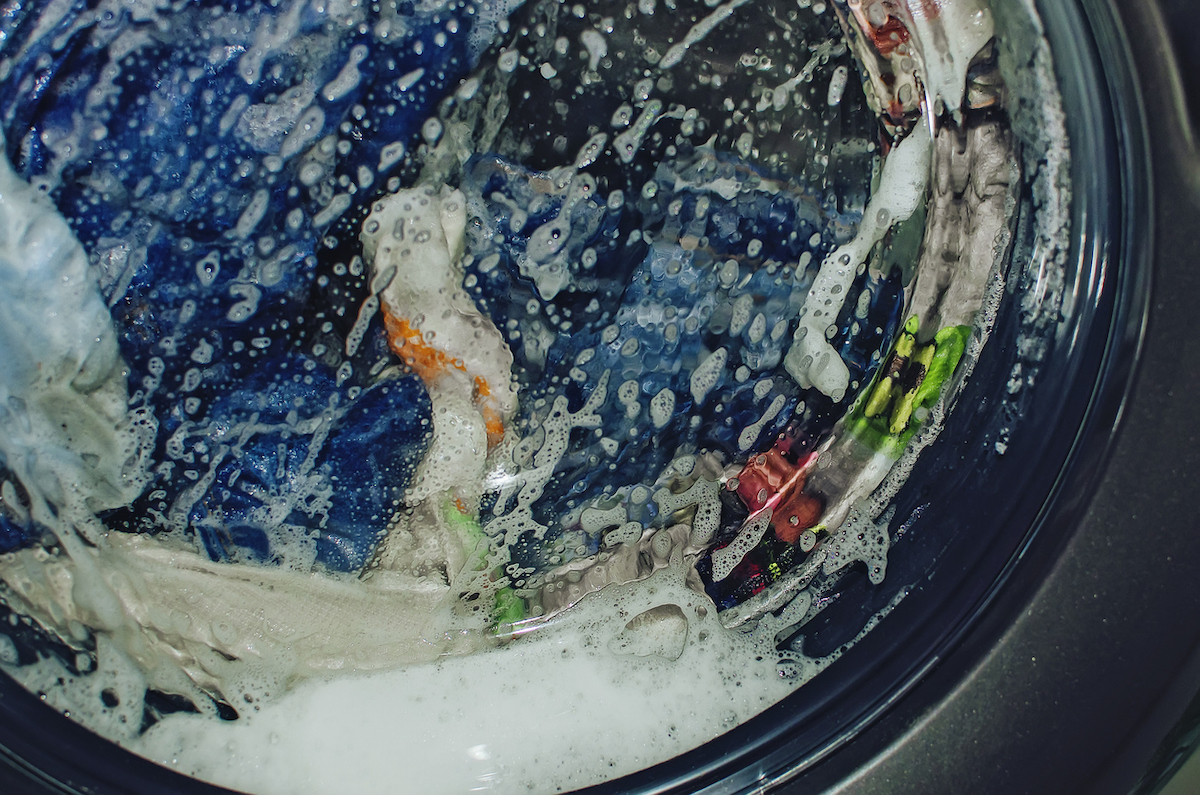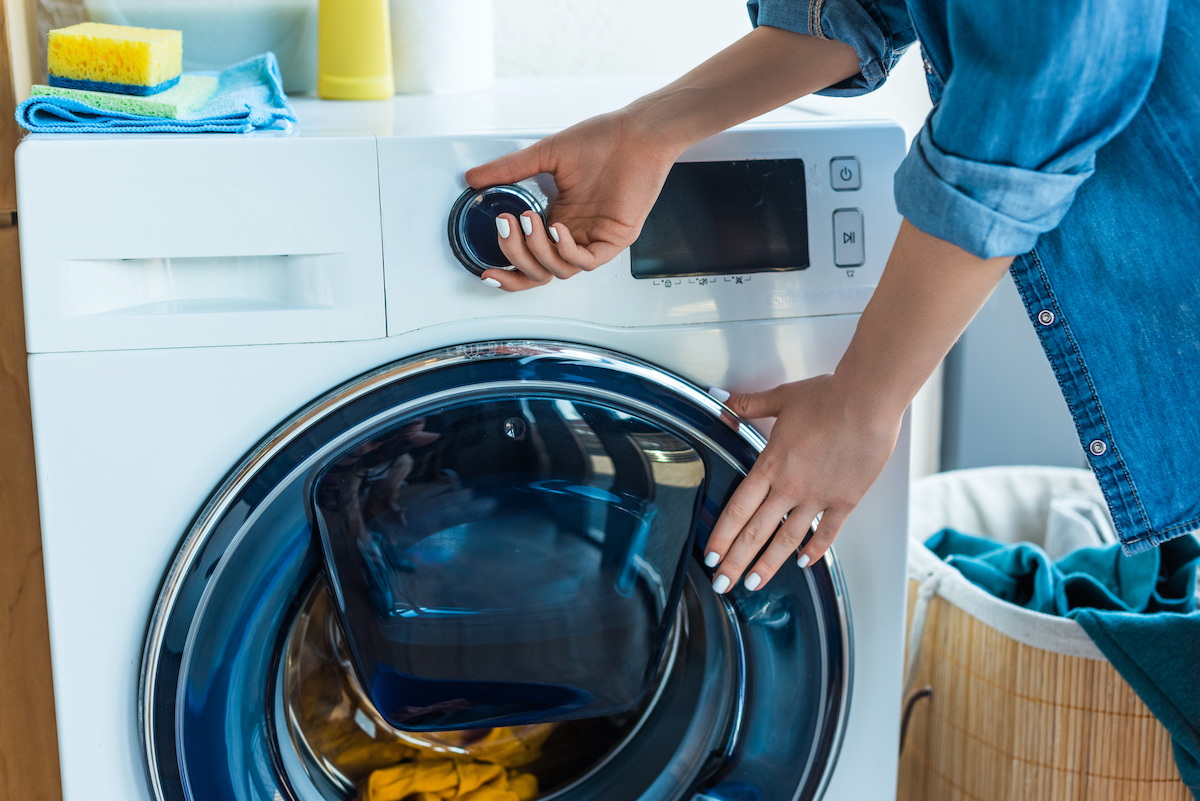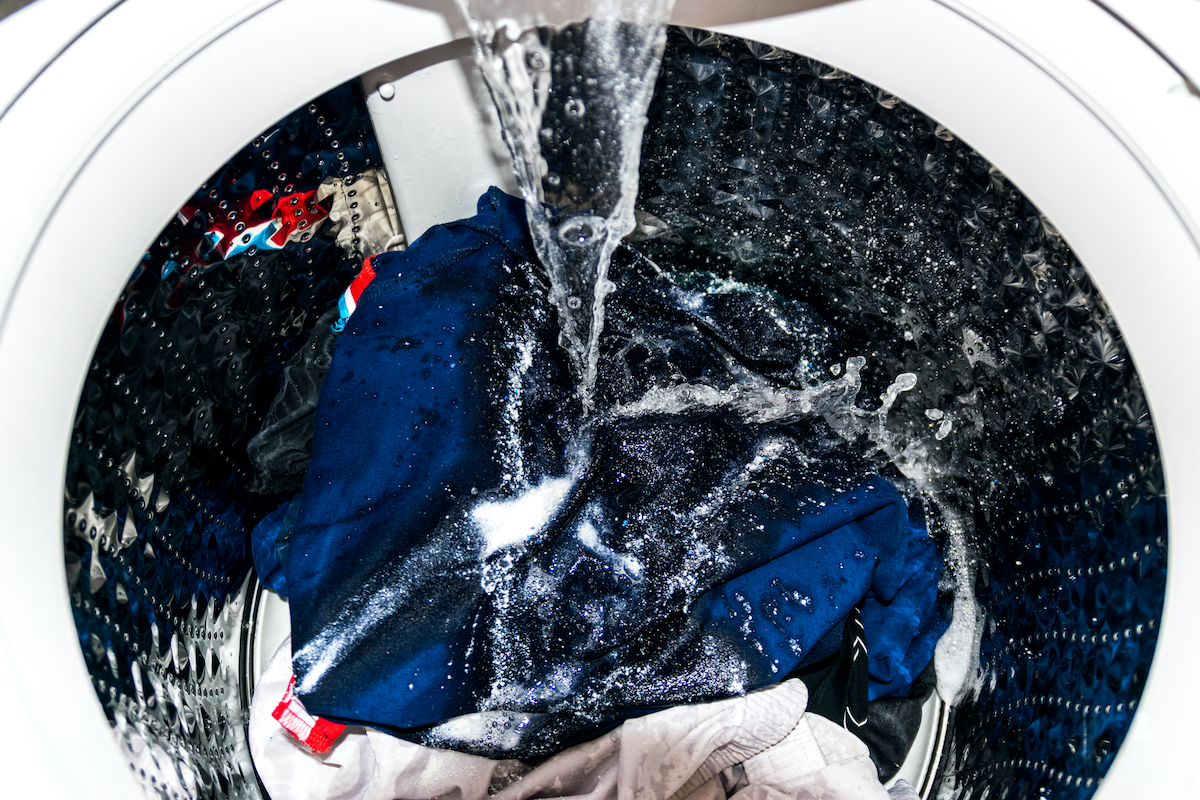We may earn revenue from the products available on this page and participate in affiliate programs. Learn More ›
Q: I’m shopping for a new washing machine and I am trying to decide if one of the energy-efficient models is really worth it. How much water does a washing machine use? Is there a significant difference between models?
A: You’re wise to consider water usage when shopping for a new washing machine. After all, a standard washing machine can account for approximately 17 percent of the home’s water usage, according to the EPA. Finding ways to decrease this amount can not only have a positive impact on your bank account, but it can also reduce waste and help protect our Earth. So, how much water does a washing machine use? Read on to learn how the type of washing machine you use, along with other factors, can impact the average amount of water needed for each load of laundry.
Standard top-load washing machines use between 30 and 35 gallons of water per load.
How much water does a washing machine use per load? The answer varies depending on the type of washing machine you use. Standard top-load washing machines, particularly older models, are the least efficient when it comes to water usage. Most use between 30 and 45 gallons for each load of laundry.
In addition to the high water costs for operating these models, you’ll also have to factor in the cost of heating the water. Since 30 or 45 gallons of water is significantly more than more efficient models require, washing a load of laundry in hot or warm water will also consume a lot more electricity.
RELATED: 19 Laundry Mistakes You’re Probably Making
Full-size Energy Star washers use about 14 gallons of water per load.
The answer to “How many gallons of water does a washing machine use?” is quite different for those who have an energy-efficient washer. Some Energy Star washing machines use as little as 7 gallons of water per load, with the average amount being around 14 gallons.
In addition to consuming less water than standard washing machines, Energy Star models are also more energy efficient. They use an average of about 25 percent less energy than standard machines. It is estimated that purchasing a product with an Energy Star label can save you approximately $370 in energy costs over the time you own the washer.

Front-load washing machines use less water than top-load models.
One of the biggest differences between front-load washers and top-load washers comes down to water usage. Front-load washing machines use significantly less than top-load models.
As mentioned above, standard top-load washing machines can use up to 45 gallons of water per load. While Energy Star front-load machines can cut this figure quite substantially, to about 15 to 20 gallons of water, it will still be higher than a high-efficiency front-loading washing machine. These models will be the most efficient, with some using as few as 7 gallons of water per load. Again, keep in mind that lower water usage will also equate to lower energy use to warm up that water.
RELATED: The 13 Best Things You Can Buy for Your Laundry Room (for Under $50)
Other factors that affect washing machine water usage:
The answer to “How much water does a washer use?” varies based on a number of other factors, including:
-
Washing machine capacity: Washing machines with a larger capacity typically require more water to complete a load than a standard machine. The larger drum of these models not only holds more clothing and bedding, but also holds more water to wash these items.
-
Load size: More water is needed to wash a larger load of laundry than a smaller load. If the machine is full of clothing or linens, additional water will be needed to ensure all the items are fully saturated and thoroughly cleaned.
-
Wash cycles: Washers have different wash cycles for fabrics and clothing types. Some of these wash cycles require more water, while others will use less.
-
Extra rinse settings: Selecting an extra rinse setting or a fabric softener setting on your washing machine will increase the amount of water needed to complete the load. As you may guess, an extra rinse setting involves re-filling the tub with water.

5 Ways to Further Reduce Water and Energy Use with Your Washing Machine
Cut back on washing machine water usage with these tips:
-
Skip extra rinse cycles: If you skip the extra rinse cycle, you’ll be able to drastically reduce water usage since the drum won’t be filled with an extra round of water.
-
Wash your clothes using cold water: Washing with cold water will reduce the amount of energy needed to run the washing machine. You won’t waste as much energy heating the water for a hot or warm cycle.
-
Aim for full loads: When possible, try to accumulate a full load’s worth of laundry before washing it. This will decrease the total amount of water you’ll need compared to washing multiple smaller loads.
-
Pay attention to the load size settings: Most washers offer different cycle settings for large and small loads. If you aren’t running a full load, select the “small load” setting. This will reduce the amount of water used for the cycle.
-
Use an HE laundry detergent when appropriate: If you have a high-efficiency top-load washer or a front-load washer, switch to a high-efficiency laundry detergent. These detergents are specifically formulated to be low-sudsing. Without a low-sudsing detergent, the washer may go through multiple rinses to eliminate all the suds, wasting more water.


